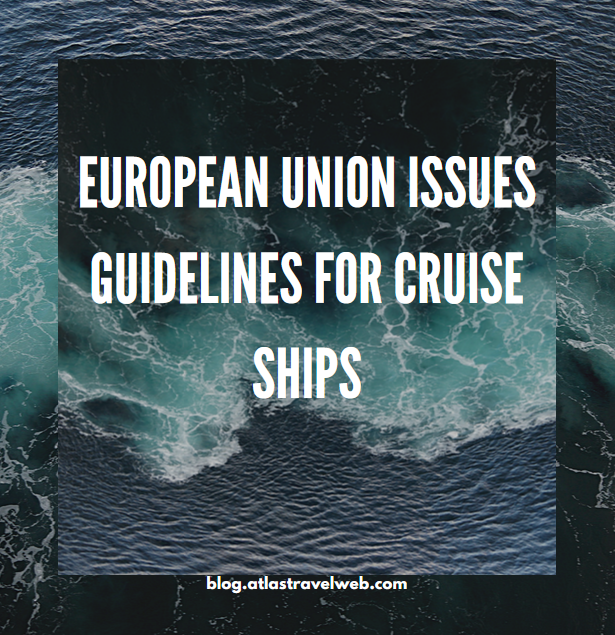The European Union issued guidelines to the cruise industry to begin sailing again in Europe. This includes a number of health and safety measures that should keep the risk of COVID-19 infection down for both guests and crew on ships sailing European waters. They are referring to the plan as “healthy getaways.”
In the Healthy Gateways plan, the European Union states cruise lines must have a written contingency plan for a COVID-19 outbreak and be able to arrange medical treatment, repatriation and shore side quarantine of any passenger or crew member who comes into close contact with an infected person. Cruise lines should consider testing all incoming passengers for COVID-19 before boarding and routine health monitoring for all crew.
The EU recommends reduced onboard capacity to allow for physical distancing and the quarantining of passengers and crew in case there is a need. Cruise lines should start out with short voyages, limiting the number of ports.
Cruise ships must sail with reduced capacity, adequate testing onboard arranged prior to embarkation, enhanced crew member training and more. It is suggested that cruise lines explore having the check-in processes outdoors and moving to online payments.
There will be no self-service buffets, and food will be delivered to passengers by crew in closed packages or wrapped when delivered. Interaction between passengers and crew is to be kept to a minimum. It may be possible to order drinks & food off of apps. Cabins would not be cleaned twice daily but rather at a passengers request only.
Face masks are recommended for both guests and crew while in cruise terminals and in indoor spaces on ships where physical distancing is impossible. Hand-sanitizer stations should be available throughout the ship. Ventilation should provide as much outside air as possible. It is recommended that indoor pools eliminated. Deck chairs should be spread out 5 ft. apart.
Passengers in high-risk groups, such as those 65 and older, must consult a doctor to assess their fitness levels to travel before cruising. Activities and services onboard cruise ships are to be organized according to age groups, so that older individuals are separated from other age groups. This applies to crew members, as well, with those in high-risk groups will work in positions where there is little or no interaction with others.
Cruise ship cabins should not have any item that cannot be cleaned and disinfected between sailings such as menus, magazines, coffee or tea packaging and mini-bar products. Disposable covers should be placed on remote controls.
Tour operators for shore excursions should implement social distancing and follow cleaning and disinfection protocols.
These protocols may be implemented easier for luxury cruise lines that have smaller ships such as Crystal Cruises, Regent Seven Seas, Azamara Cruises and Oceania Cruises, but will be quite challenging for Royal Caribbean or NCL who typically have much larger ships sailing in Europe. Read more about this on a related post, small ship cruises resume.








